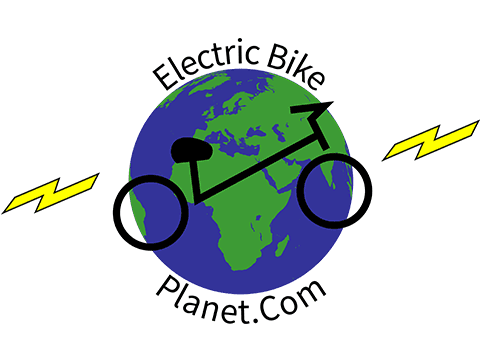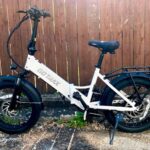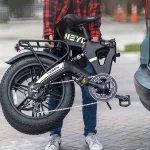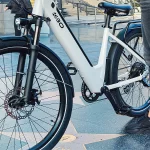Electric bikes and scooters are both popular personal electric vehicles that are great options for commuting and getting around town. But which one is right for you – an e-bike or an e-scooter? There are some key differences between the two that are worth considering before making your purchase. In this article we talk about Electric Bikes vs Scooters and Which Is Better for You In 2024.
Table of Contents
Price
One of the first things you’ll notice is that electric bikes tend to be more expensive than electric scooters. You can find basic e-scooters for $300 to $500, while most decent electric bikes start around $1000 and go up from there. High-end e-bikes with premium features can cost $4000 or more. However, e-bikes may pay for themselves over time since they require less maintenance than scooters.
Comfort and Ergonomics
Electric bikes allow you to sit upright with both feet planted, like a traditional bicycle. This makes for a more comfortable and natural riding position for most people. Scooters require you to stand the entire time with only one foot on the deck. This can lead to fatigue over longer distances. E-bikes distribute your weight over both wheels while scooters concentrate all your weight over one wheel, affecting stability. Most e-bikes have saddle seats that allow you to customize the fit and riding position to match your height and comfort needs.
Range
The range, or distance an electric vehicle can travel before needing a recharge, tends to be higher with e-bikes. High-end electric bikes can reach 60-100 miles on a single charge. Electric scooters average 15-30 miles on one charge. This makes e-bikes better suited for longer commutes or running errands around town between charges. However, scooters are still useful for shorter trips.
Speed
Electric scooters can reach maximum speeds around 15-30 mph, while most e-bikes top out at 20 mph using just the electric motor. However, e-bikes allow you to pedal past 20 mph by supplementing pedal power with the electric assist. So fitness-focused riders can essentially go as fast as they can pedal. Scooters are limited by the power of the motor.
Terrain Handling
In general, electric bikes are better at handling uneven terrain, gravel, curbs, and small obstacles you may encounter around town. The larger air-filled tires and suspension systems on most e-bikes absorb bumps in the road better than the small, hard wheels of a scooter. E-bikes give you more confidence riding across potholes, train tracks, grass, or gravel instead of navigating around them.
Weight and Portability
Electric scooters are lighter (25-45 lbs) than e-bikes (40-60 lbs) in most cases. And they have built-in stems that make it easy to pick them up and carry onto public transportation. Their light weight and compact size make scooters easier to bring into buildings and store in small spaces. E-bikes can be heavy and awkward to lug upstairs or onto buses, though some folding e-bike models help solve this issue.
Safety Equipment
In many areas, e-bikes and e-scooters fall into the same electric bicycle legal classification and must follow similar rules of the road as regular bicycles. However, scooters lack basic safety features that come standard on most e-bikes, like front and rear lights, reflectors, and braking systems optimized for higher speeds. Adding protective gear like helmets and gloves helps compensate for the higher risk of falling from a standing position on scooters.
Maintenance
The sealed components and minimal mechanical parts of electric scooters require little routine maintenance. You may need to occasionally check tire pressure, tighten bolts, or charge the battery. E-bikes have more moving parts like derailleurs, brakes, and gear shifts that require adjustment and lubrication to keep running smoothly. So scooters hold an advantage in maintenance needs and costs.
Environmental Impact
Electric bikes and scooters both provide a green alternative to gas vehicles for personal transportation. Studies show e-bike riders get more physical activity during trips and are more likely to replace car trips than e-scooter riders. So e-bikes likely have a greater positive environmental impact overall by reducing more fossil fuel usage per trip. But both options are far greener than driving.
Fun Factor
Electric scooters hold strong appeal with teenagers and young adults who enjoy the thrill and tricks enabled by the nimble scooter form. Adults may also appreciate scooting’s playful, almost hoverboard-like sensation. On the other hand, e-bikes attract riders who want a more “natural” cycling feel enhanced by electric assist. The ability to pedal as much or as little as you want caters to both fitness buffs and casual riders.
Legal Status
Regulations around e-bikes and e-scooters are still evolving in many regions. In some areas, scooters exist in more of a legal gray zone with restrictions on where you can ride or if they require registration. E-bikes largely follow the same rights and responsibilities as human-powered bicycles in places with developed regulations. Be sure to understand your local laws before choosing between the two options.
In summary, electric bikes shine for comfort, range, terrain handling, and exercise potential. But scooters win for affordability, portability, and ease of maintenance. Other factors like your commute distance, storage space, local regulations, and budget may also sway your decision. Take stock of your needs and priorities before choosing the best electric mobility option for getting around your area. Both e-bikes and e-scooters beat cars for costs, environmental impact, and fun when used responsibly. I sincerely hope you find this “Electric Bikes vs Scooters-Which Is Better for You In 2024?” article helpful.
🔋 More From ElectricBikePlanet

Captain Colyer is an expert in sustainable transportation with a Master’s degree in Environmental Engineering. With over 9 years of experience, he is dedicated to advancing eco-friendly commuting solutions. His work focuses on the latest advancements in electric bike technology and promoting sustainable living practices. At ElectricBikePlanet.com, Captain Colyer shares his in-depth knowledge and practical insights to help readers make informed decisions about electric bikes. Join them on their electric journey for the best e-bike advice and recommendations, and connect on Facebook, Pinterest, and Instagram.







